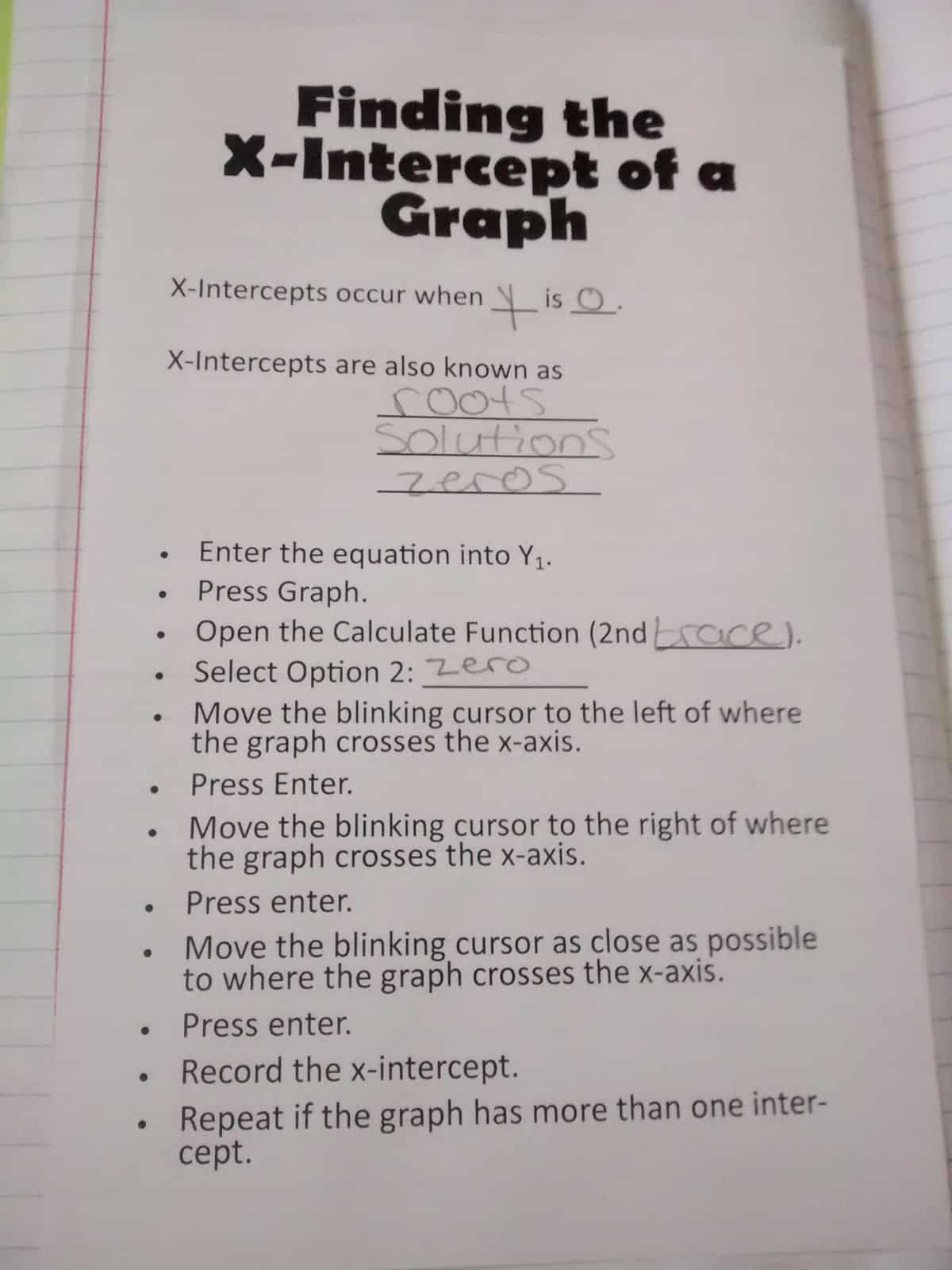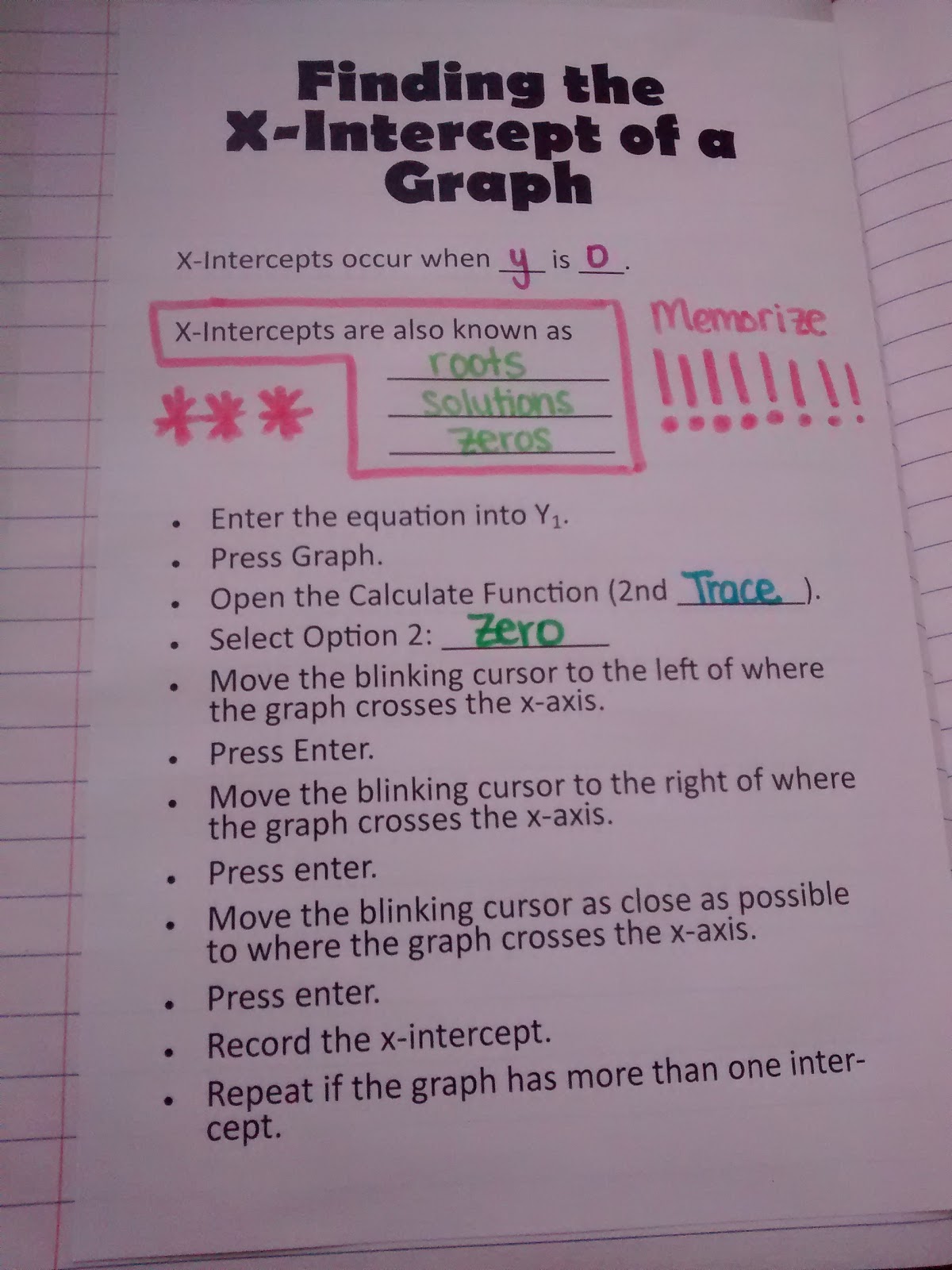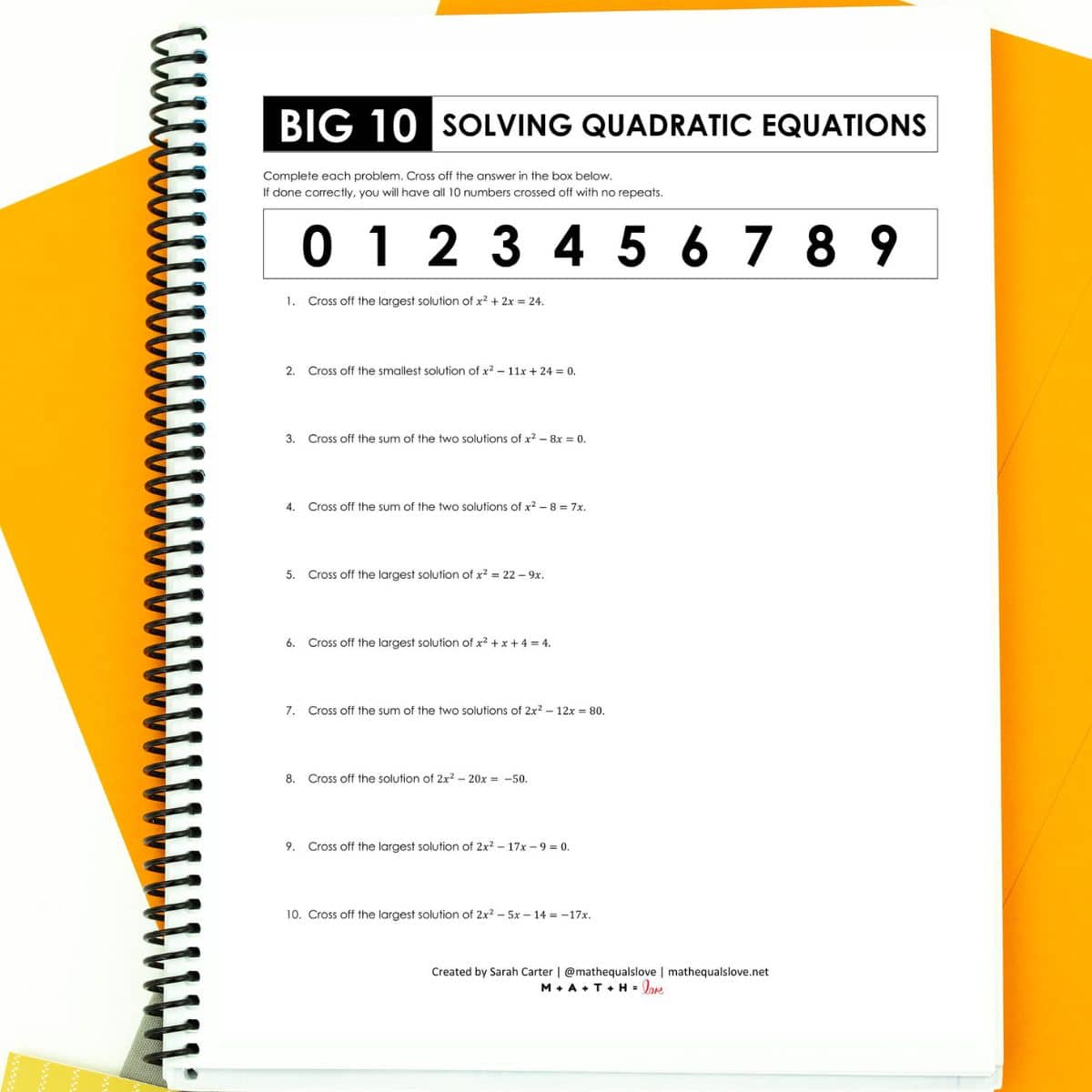Finding X-intercepts of a Graph [TI-84 Instructions]
I typed up this set of instructions for finding the x-intercepts of a graph using the TI-84 for my Algebra 2 students to fill in and glue in their interactive notebooks.

I also created a similar set of instructions for finding the y-intercept of a graph using the TI-84 calculator.
Steps for Finding the X-Intercepts of Graph Using the TI-84
- Enter the equation into Y1
- Press GRAPH
- Open the Calculate Function (2ND TRACE)
- Select Option 2: ZERO
- Move the blinking cursor to the left of where the graph crosses the x-axis
- Press ENTER
- Move the blinking cursor to the right of where the graph crosses the x-axis
- Press ENTER
- Move the blinking cursor as close as possible to where the graph crosses the x-axis
- Press ENTER
- Record the x-intercept
- Repeat this process if the graph has more than one x-intercept
Another thing that throws my students off is the fact that they are rarely asked to find the x-intercepts of a graph on their end-of-instruction exam. Instead, they will be asked to find the roots, solutions, or zeros of an equation. I really try to drive home the fact that anytime they are asked for roots, solutions, or zeros, they are really just being asked to find the x-intercept.

I told my students to draw a box around this fact, star it, add exclamation points, or anything that would make it stand out in their notes. They noted that the way I had boxed it in on mine looked like the state of Oklahoma. I joked that I had done that on purpose because the state of Oklahoma was requiring them to know this fact.
My students really struggled with the left bound and right bound instructions, so I shared with them a tip I learned from @druinok. She has her students place the cursor as close to the point as possible and then click the left arrow a few times for left bound and the right arrow a few times for right bound. My students thought this was the best trick ever. It really cut down on the mistakes they were making.
Free Download of Instructions for Finding the X-intercepts of a Graph using the TI-84
Click here to Download
Finding x-Intercepts of Graphs Notes (PDF)
1306 downloads – 135.20 KB






